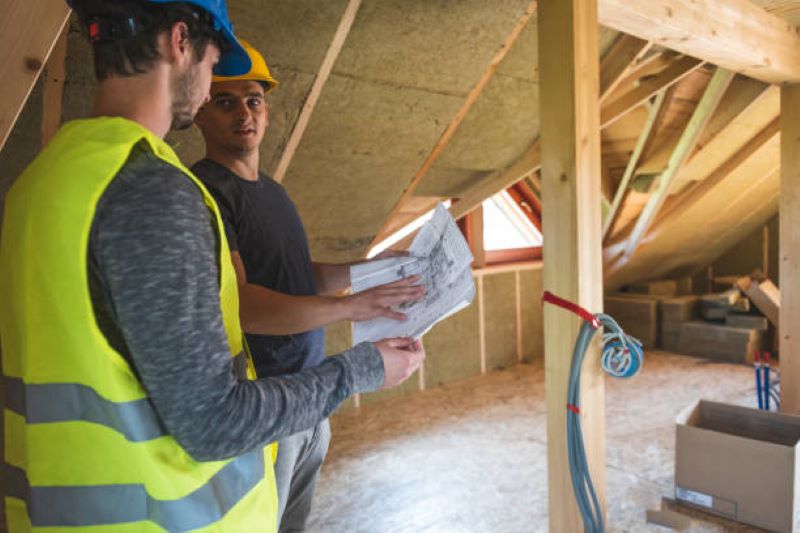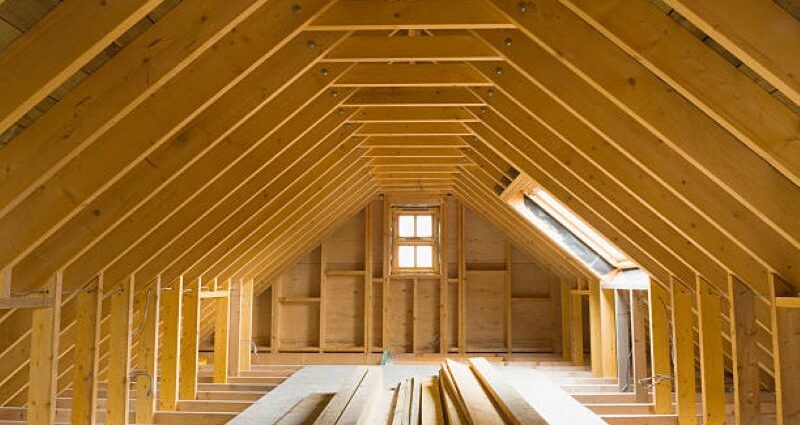The Attic Roof Truss is a solution for creating additional space in your roof. Whether it’s for residential purposes, such as an extra bedroom or living room, or for business purposes, such as an office space, or for storage, the intended usage will have an impact on the final design of the conversion. Therefore, it is crucial for the designer to have a clear understanding of the intended purpose of the “room in the roof”.

Option 1:
Work with a local Roof Truss Manufacturer to design and manufacture the trusses. The fabricator will use their specialized software to design an attic truss that meets your requirements. Communication with the designer is important to ensure the truss is designed to handle the correct load. The loading capacity of the truss varies depending on the intended usage. For example, if it’s to be used as a living space, the loading applied is only 1.5kN/sqm, which is equivalent to 150kg per square meter. However, if it’s intended to be used as office space, the loading capacity is 250kg per square meter, and for storage purposes, the loading capacity is 500kg per square meter.

Option 2:
Convert your existing trusses into an attic space. Not all roofs are suitable for conversion into an attic space, as the roof pitch, roof span, and roof covering type play a role in determining the feasibility of the conversion. A roof pitch of at least 35 degrees or higher is recommended for attic conversions. The span of the trusses and the roof pitch will determine the height of the trusses. The weight of the roof covering also affects the feasibility of the conversion, as lighter roof coverings, such as metal roof sheeting, are easier to convert than heavier materials, such as cement roof tiles. However, with the addition of girder members, cross members, and beams, even heavy roof coverings can be converted.
Attic Roof Conversion Cost:
A modest conversion for purposes such as a bedroom, playroom, or storage area can incur costs ranging from R30,000 to R80,000. A more extensive conversion, accommodating additional spaces like a study and/or living area, may extend up to R150,000. The inclusion of a bathroom can further escalate the cost to over R200,000. Factors such as roof pitch, roof covering, roof shape and truss configuration also contribute to variations in the overall cost.
Estimating the cost of an attic roof conversion is challenging due to numerous factors that influence the overall expense. These factors include:
- Size and Scope of the Conversion: The larger the space and the more extensive the conversion (e.g., adding bathrooms, installing windows, etc.), the higher the cost.
- Structural Modifications: If structural modifications are needed to support the additional weight or create the desired layout, it can significantly impact the cost.
- Materials and Finishes: The choice of materials and finishes for flooring, walls, windows, and other elements can influence the overall cost.
- Location: Costs can vary based on the specific location within South Africa due to differences in labor and material costs.
- Permits and Regulations: Costs associated with obtaining permits and ensuring compliance with local building regulations can contribute to the overall expense.
- Labor Costs: Labor costs for construction and skilled tradespeople can vary, affecting the total cost of the project.
To get an accurate estimate for an attic conversion in South Africa, it’s recommended to consult with local architects, builders, or contractors. They can assess your specific situation, consider your requirements, and provide a more accurate cost estimate based on current market conditions and local factors.
Your local Roofing Contractor found in the Roofing Directory can guide you on the feasibility of converting your existing roof into an attic space.

Comments are closed, but trackbacks and pingbacks are open.